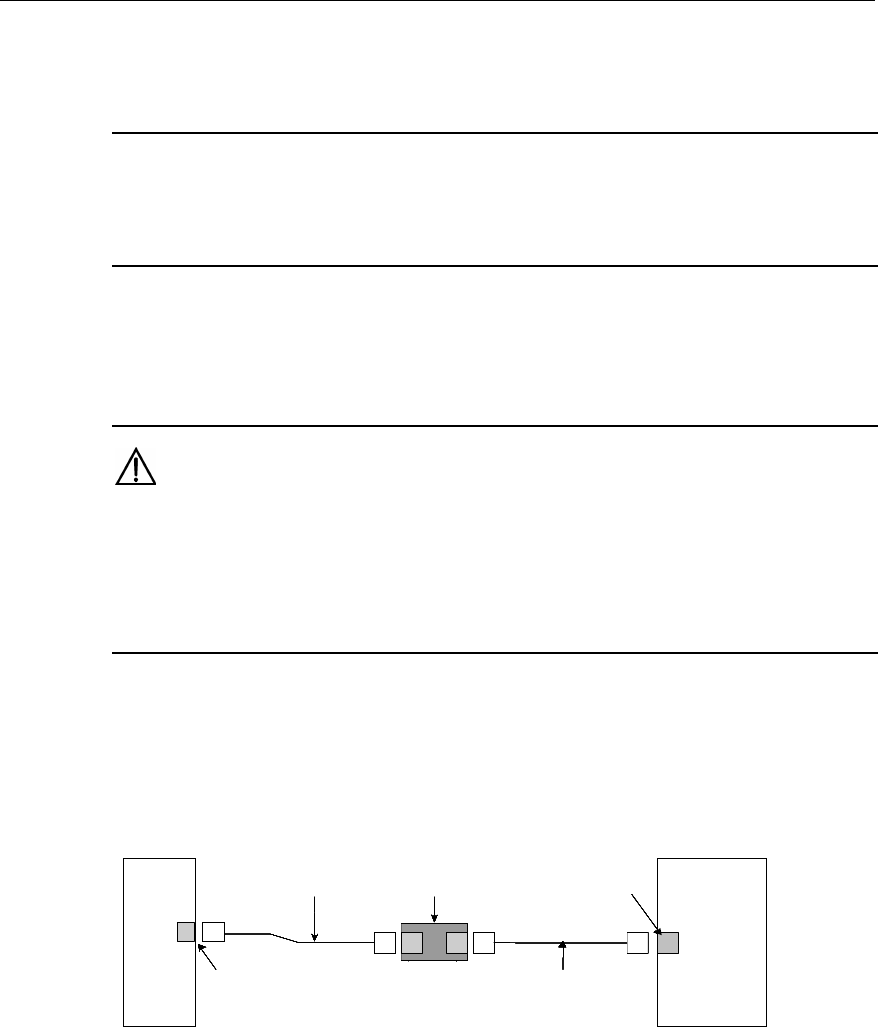
3Com Router 5000 and Router 6000 v2.41
Module Guide
Chapter 4 Flexible Interface Cards (Router 6000)
4-30
To extend a T1 cable, you may connect the cable to another one using a network
interface connector with an RJ-45 receptacle at each end.
Note:
Both T1 cable and network interface connector are optional accessories and are provided only when
ordered.
4.8.5 Connecting the Interface Cable
Caution:
Before you connect a port, read its label carefully; a wrong connection can cause
damages to the interface card and even the device.
If outdoor cabling is involved, consider to install a special lightning arrester at the
input end of the T1 interface cable for better lightning protection.
Step 1: Insert one end of the T1 cable into the to-be-connected RJ-45 connector on
the card.
Step 2: Connect the other end of the cable to another device directly if the cable is long
enough. If not, extend the cable before you do that, as shown in the following figure:
Router
DDN, etc
Network interface connector
Straight-through cable
-
Router
DDN, etc
Network interface connector
-
Router
DDN, etc
Network interface connector
-
Router
DDN, etc
RJ-45
Network interface connector
-
RJ-45
Router
DDN, etc
Network interface connector
-
Router
DDN, etc
Network interface connector
-
Router
DDN, etc
Network interface connector
Router
DDN, etc
RJ-45
Network interface connector
RJ-45
shielding network cable)
T1 cable (100-ohm straight-through
Router
DDN, etc
Network interface connector
Straight-through cable
-
Router
DDN, etc
Network interface connector
-
Router
DDN, etc
Network interface connector
-
Router
DDN, etc
RJ-45
Network interface connector
-
RJ-45
Router
DDN, etc
Network interface connector
-
Router
DDN, etc
Network interface connector
-
Router
DDN, etc
Network interface connector
Router
DDN, etc
RJ-45
Network interface connector
RJ-45
shielding network cable)
T1 cable (100-ohm straight-through
Figure 4-33 Extending a T1 cable
Step 3: Power on the router, and check the behavior of the LINK LED on the card
panel: OFF means fault occurs on the line. Check the line status.


















